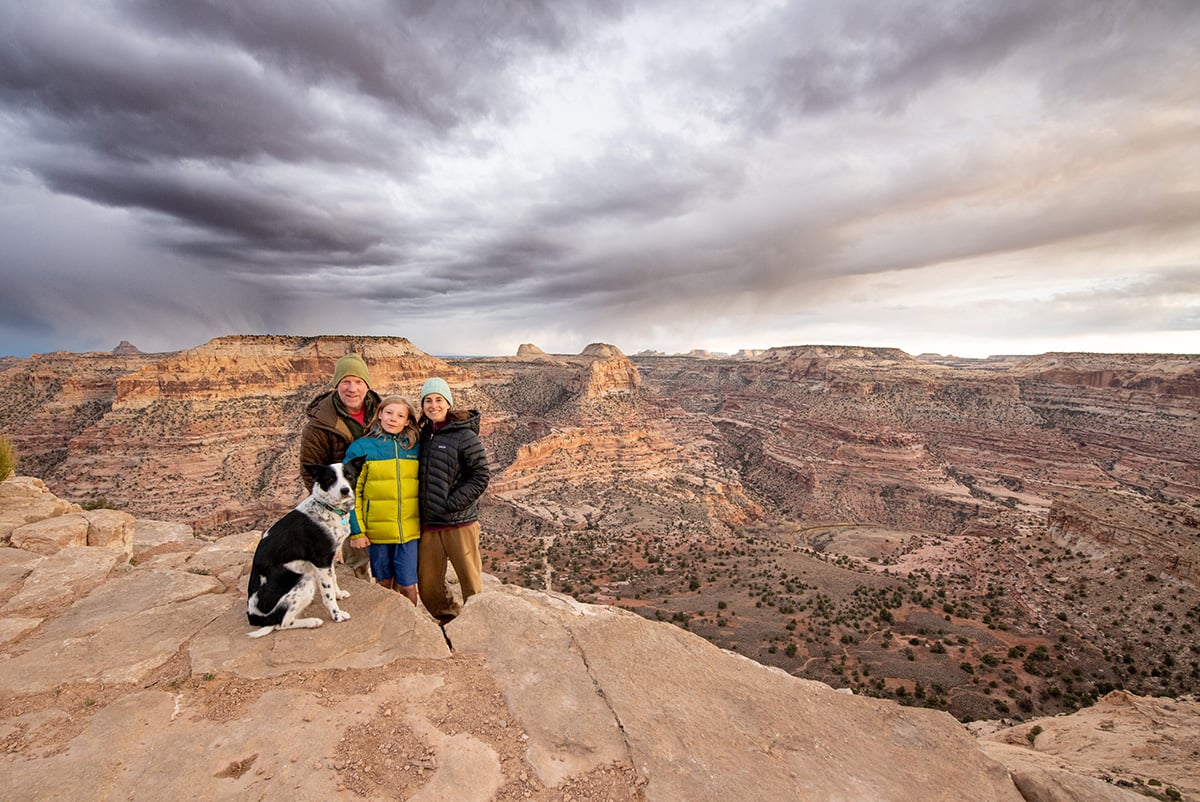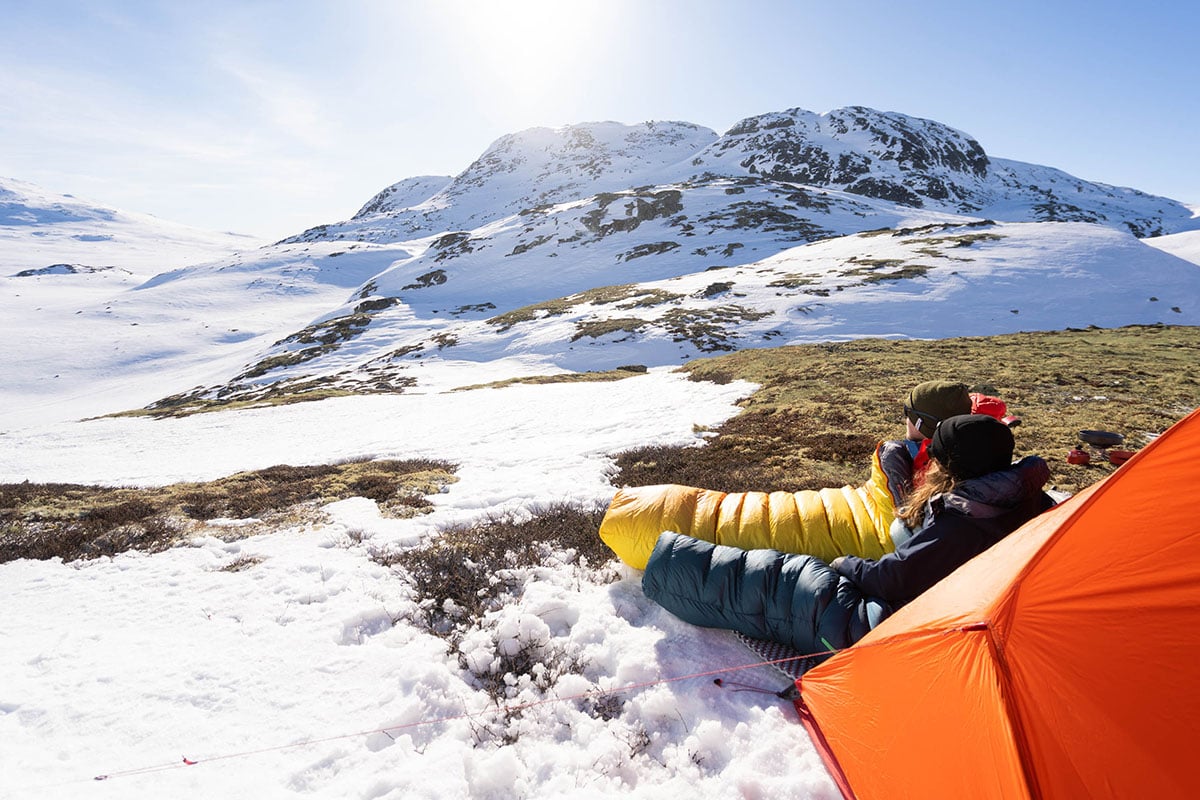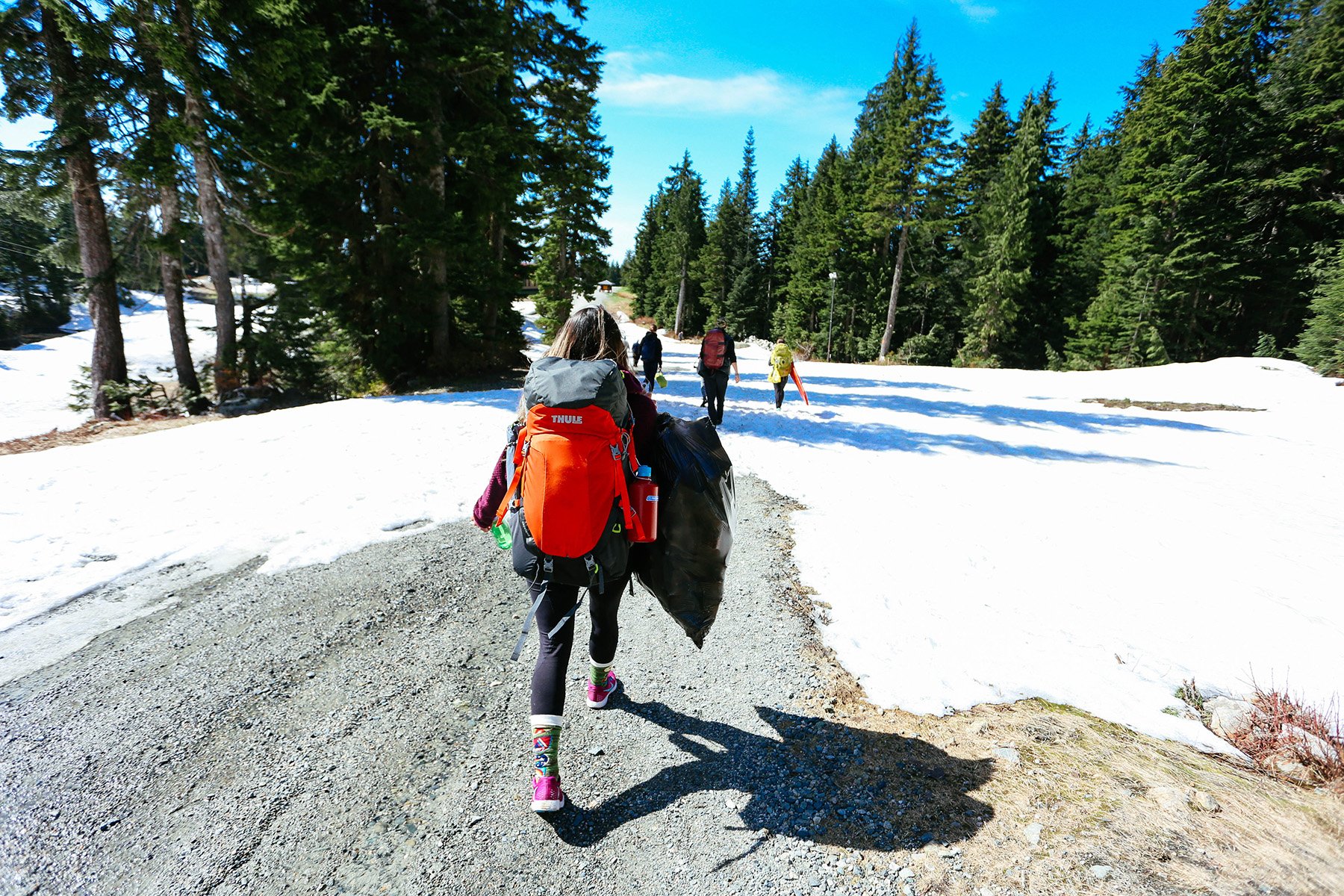It’s a polarizing choice. The pricey and crowded frontcountry campground or the remote and amenity-less backcountry campground. Most of us have a preference between the two, but both don’t come without their downsides. In this edition blog post, contributor Jill Sanford guides us through the process of camping on BLM land.

Picture yourself waking up outdoors, snuggled deep in your sleeping bag as the sun rises and shines through your tent. Your campsite is quiet except for the sounds of birds waking up or the trickle of a nearby creek. Perhaps you have a day full of adventure or travel ahead of you or are there to savor the scenery and escape from your daily life.
In either case, you’re filled with the undeniable contentment that comes from waking up in a beautiful outdoor setting.
Imagine waking up to all this without having paid a dime or trekking deep into the backcountry.
Camping on BLM Land
Many people think there are only two options when it comes to camping: setting up camp deep in the backcountry or being squeezed in like sardines at a pricy campground. As taxpayers, however, we are also public landowners, meaning that we’ve already paid our dues to camp out on U.S. Forest Service (USFS) and Bureau of Land Management (BLM) land.
Dispersed camping, as free, unsupported camping on public lands is called, offers campers a great base camp while exploring nearby landscapes, a place to set up for the night on your way through, or even a destination in its own right.
Sounds pretty amazing, right? There’s something inspiring about opening up a map, finding a great swath of green on it, and knowing you can come and go to a remote piece of forest or desert as the wind blows you. Those of us with an inner dirtbag or wandering spirit relish the idea of showing up, camping out, and moving on.
There’s a lot to love about dispersed camping—it’s remote, scenic, and basically free of cost. I’ve camped on public lands outside of national parks, up the road from my house, and all across the west on cross-country road trips.

Unlike when I go backpacking, I don’t pinch ounces. I throw a cooler packed with everything from a carton of eggs to a six pack of beer in the back of my Subaru. A percolator and a pound of coffee, a few extra pillows, my Base Camp mattress pad, comfy camp chairs, and lots of good company are all things that I like to have with me in a dispersed campsite and often decide to leave at home when I head out into the backcountry.
Dispersed camping combines the ease of car camping with the remote, only-people-around-for-miles feeling of backpacking. It’s great for families, larger groups, roadtrippers, vagabonds, and those looking to avoid the fees or crowds associated with fully supported, average campgrounds.
Like most things in life, however, dispersed camping is not as simple as it sounds. There are strict rules and etiquette when it comes to camping for free on public land.
Dispersed camping is fully unsupported, meaning there are no restrooms, potable water, or trash receptacles that you might find at a traditional frontcountry site. Even though you are for all intents and purposes car camping in a dispersed site, the experience is in some ways very similar to backpacking in that you need to carefully minimize your impact on the natural landscape.
Here are a few critical considerations when it comes to unsupported camping on public land.

Leave No Trace (LNT)
If the words LNT are new to you, start here first. The seven LNT principles are the rules to live by when it comes to packing out all waste and trash, disposing of human waste properly, and minimizing your impact as a camper.
Use LNT principles like a checklist when you are camping in an unsupported area. There’s no trash cans in dispersed campsites, so plan on leaving a spot in the car for all your waste on the way back to civilization. Using bear canisters or hoisting your food up into a tree overnight is also a good idea if there are troublesome wildlife in your location. After packing up, make sure you sweep your campsite for any trash or food left behind.
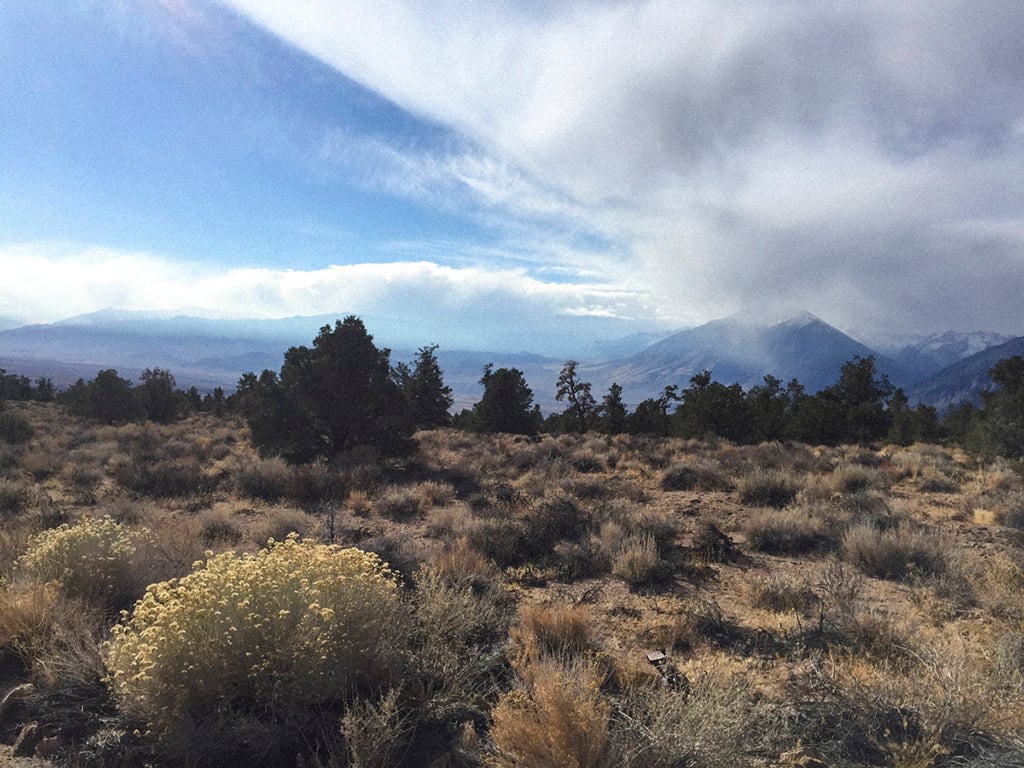
Backcountry Restroom Rules Apply
While these tenants are covered under LNT principles, the fact that there are no facilities for human waste is probably the biggest change for dispersed campers venturing out of supported campsites for the first time.
Just like when you are backpacking or hiking, you shouldn’t find a bush or tree to duck behind within 200 feet of a water source. Pit toilets for solid waste have the same rules as in the backcountry—you’ll need to dig a hole that is at least 6 inches deep. Pro tip: You can throw a shovel or trowel in the car when dispersed camping since you don’t need to worry about the extra weight. While not always required, it’s a best for the environment if you pack out your toilet paper rather than bury it, too.
H2O
Another immediately noticeable difference between dispersed and supported camping is that you are completely on your own for water. Your water supply can easily make or break your camping trip and it’s absolutely essential to think ahead regarding where you will find your H2O.
You will need a filter, tablets, or enough water for your entire stay. Some dispersed camping sites aren’t located on water, and you might want to consider investing in a few large jugs so you’ll never run out.
Make sure you also have plenty of water on hand to put out a campfire if you have the option and permit to light one.
There’s no hoses or spigots out there in the woods. That means no running water, toilets, or places to wash dishes. Once again, LNT and backcountry land ethics regarding are essential skills and principles when it comes to dispersed camping.

Don’t Forget a Campfire Permit
If you are interested in having a campfire, you’ll have to pick up the phone or stop in at the local ranger’s office to double check if fires are currently allowed and if you need a permit. Do NOT skip this step—fire safety is serious business.
Some camping areas are designated by a fire ring, but not always. Don’t bring firewood from home, either buy or collect it locally. You shouldn’t use branches larger than an adult human’s wrist. Only collect already downed wood and burn all coals to white ash.
Call the Local Land Management Agency
If you take one thing from this article besides how great dispersed camping is, it should be to call the local management agency before heading out. The only sure fire way find a dispersed campsite in an area you have never been before is to talk to a BLM or USFS ranger about where you can and can’t go.
You can camp anywhere that isn’t designated for another use, but sometimes it isn’t always obvious what is and isn’t meant for one thing or another in the middle of a forest. Each area might also have specific rules you should be aware of, such as how far off the road you must leave your car or set up a tent.
Dispersed campsites are available on a first-come first-served basis, meaning there are no reservations and you can’t count on a specific campsite being free when you show up. It’s great to find a couple of options and pinpoint them on a paper map before you hop in your car and head out there, as well.

Don’t Overstay Your Welcome
A friend living in a pricy mountain town saved money on rent for an entire summer one year by living from one dispersed campsite to the next, always moving every couple of weeks. While this isn’t necessarily recommended, it’s not breaking any laws and is a great way to live off the land for a month or two.
Just remember leave the place with no trace you were there if you choose to stay long term. In frontcountry campsites, designated trails and places to pitch a tent minimize your impact. In dispersed sites, take care not to trample the plants, move logs or boulders, or change the natural environment in any way.
Dispersed campers can stay for two weeks before you have to pick up and move at least five miles away, but it’s good to check on this rule with the local land agency if you plan on staying for a length of time, as well.
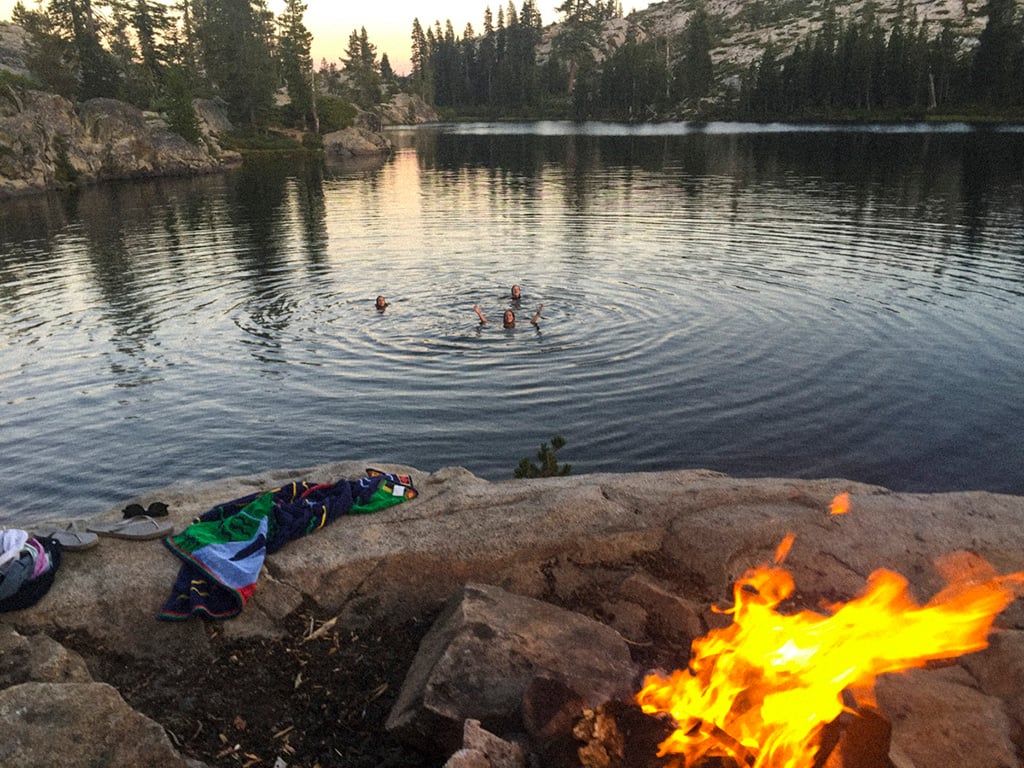
Leave Your Campsite Better Than You Found It
We’ve all seen evidence of other people mucking up the forest or desert on camping trips. An orange peel or stray bit of toilet paper can ruin even the most scenic view. Every time you pack up and head out, make sure you are leaving behind a pristine campsite.
Think about the next visitor, too. How would you want you site to look if you had just arrived looking for somewhere to camp? How about if a bear, coyote, or other wild animal decided to roam through it the next day?
Dispersed camping brings together the ease of car camping with the remote feeling backpackers see deep in the backcountry. It requires a little work, but is definitely worth the extra effort. The considerations listed above might seem like a lot at first glance, but if you continue practicing these skills to minimize your impact, they will soon seem like second nature.
The next time you wake up in a remote, scenic, unsupported campsite, listen to the subtle sounds of the forest waking up around you. As you stretch in your sleeping bag and open one eye to the morning sun, reflect on the fragility of the perfect campsite around you. The more users who stray from frontcountry campsites, the more committed we all need to be to keeping these places as pristine as possible.





